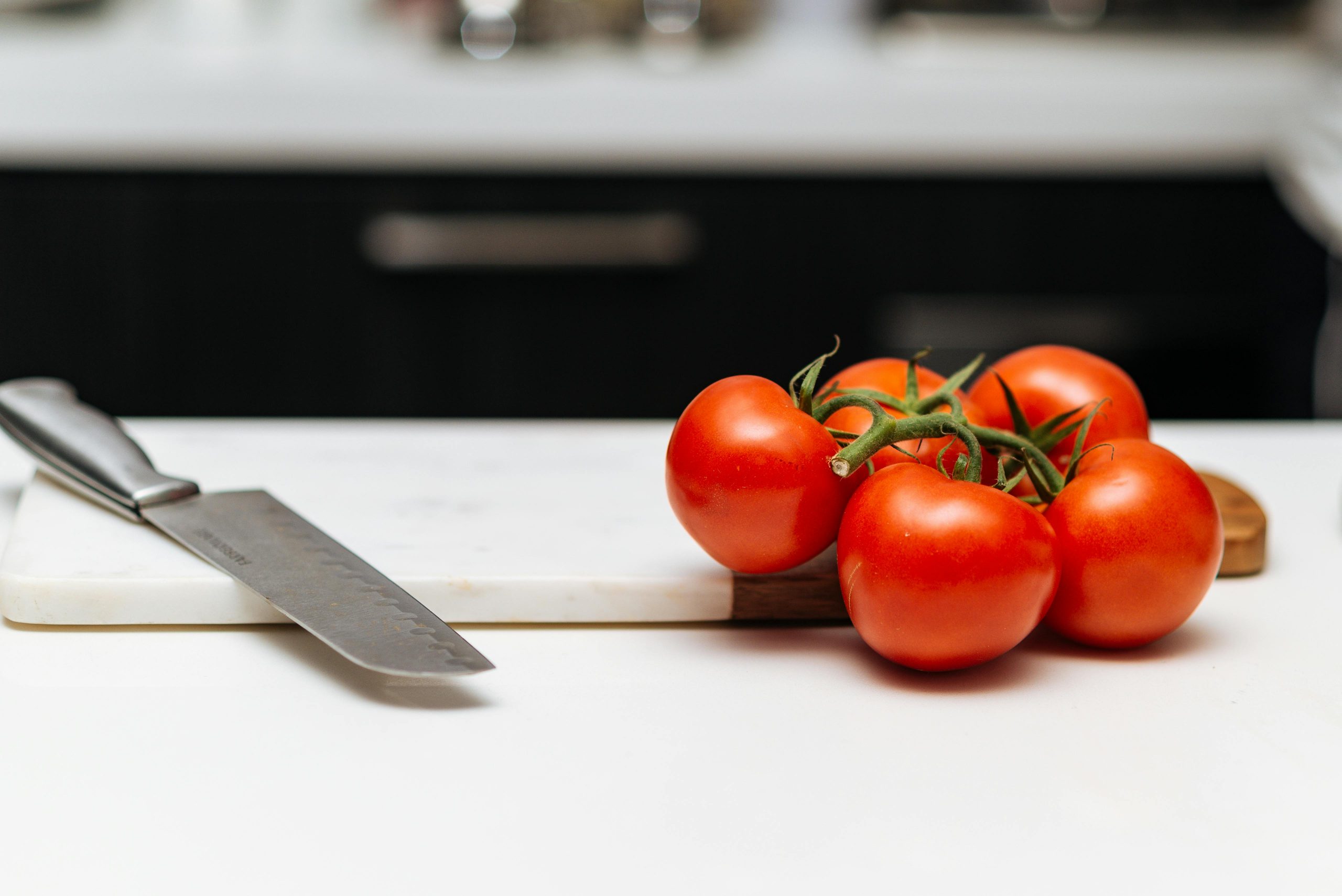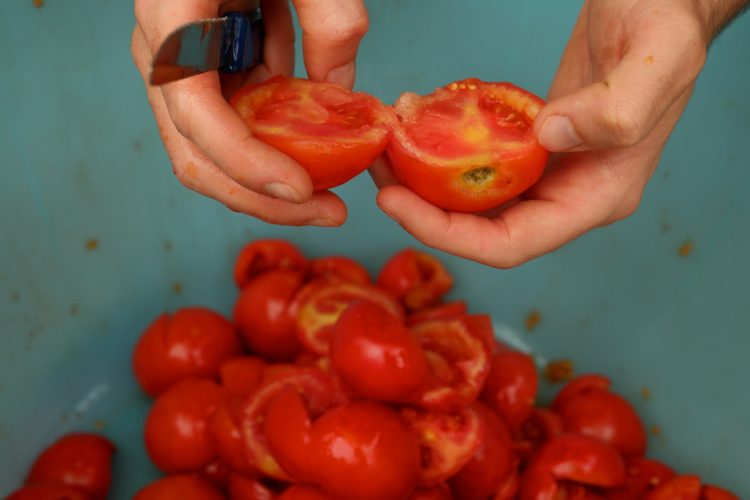We hope you enjoy this content. Just so you know, this website may collect a share of sales or other payment from any links, products, or videos on this page.
The content on this site is informational only, and is not intended to be professional advice. Please consult your attorney, doctor, or financial advisor before making any decisions.
Crushed tomatoes are a must-have in any kitchen. Whether you’re making pasta sauce, chili, or stew, they add rich flavor and a fresh tomato taste. Store-bought cans work fine, but homemade crushed tomatoes taste better, cost less, and let you control the ingredients.
This guide will walk you through how to make crushed tomatoes at home—from choosing the right tomatoes to storing them. You don’t need fancy tools, just a few basic kitchen items. Let’s get started!
Why Make Crushed Tomatoes at Home?

Making your own crushed tomatoes comes with many benefits:
Better Taste: Homemade tomatoes taste fresher than canned ones.
No Additives: You can skip added sugars, preservatives, or extra salt.
Cost-Effective: Especially during tomato season, fresh tomatoes are cheaper in bulk.
Customizable: You can adjust the texture and flavor to fit your recipes.
If you’ve ever looked into how to can tomatoes for long-term use, making crushed tomatoes is a smart and simple step that fits right in.
What Are Crushed Tomatoes?
Crushed tomatoes are a kitchen staple made by combining peeled, chopped tomatoes with their own juices. The result is a thick, slightly chunky mix that falls somewhere between diced tomatoes and tomato puree. They are cooked just enough to soften the tomatoes but not enough to break them down completely.
You’ll usually find small bits of tomato in a smooth, saucy base. This texture makes crushed tomatoes perfect for recipes that need both body and liquid—giving your meals a rich tomato flavor without being too chunky or too runny.
Common Recipes That Use Crushed Tomatoes:
Pasta Sauces: Crushed tomatoes create a smooth yet hearty base for marinara, meat sauce, or tomato basil sauces.
Soups: They add body and flavor to tomato soup, vegetable soup, and other broth-based dishes.
Stews: Crushed tomatoes help thicken and flavor stews, especially beef or vegetable-based ones.
Casseroles: Many baked dishes use crushed tomatoes to keep the ingredients moist and flavorful during cooking.
Chili: A staple in chili recipes, crushed tomatoes add the perfect balance of acidity and thickness to the dish.
Crushed tomatoes are different from other canned tomato products:
Diced Tomatoes: These are firm, small cubes of tomato packed in juice. They hold their shape during cooking and don’t break down much.
Tomato Puree: This is a smooth, thick liquid made by cooking and straining tomatoes. It has no chunks and is often used for sauces that need a silky texture.
Tomato Sauce: Thinner than puree, this sauce is often seasoned and ready to use in recipes like pasta or pizza.
Crushed tomatoes give you the best of both worlds: texture and thickness. That’s why they’re so popular in everyday cooking. Whether you’re simmering spaghetti sauce or slow-cooking chili, crushed tomatoes help tie the dish together with a rich tomato base.
If you enjoy making homemade tomato products, you might also be interested in learning how to can tomatoes. Canning is a great way to preserve fresh tomatoes for year-round use—including your own crushed tomatoes made from garden-fresh produce.
Best Tomatoes to Use
Not all tomatoes are created equal, especially when you’re making crushed tomatoes. The kind of tomato you choose will affect the flavor, texture, and how much cooking time you’ll need. The best tomatoes for crushed tomatoes are meaty, low in water, and full of flavor.
Here are some of the top choices:
1. Roma Tomatoes (Plum Tomatoes)

These are one of the most popular types for sauce and canning. Roma tomatoes have:
Thick, firm flesh
Fewer seeds
Low water content
Because they’re less juicy, they break down easily into a thick sauce without having to cook them for hours. They’re affordable, easy to find, and ideal for beginners.
2. San Marzano Tomatoes
San Marzano tomatoes are a type of plum tomato known for their:
Sweet, rich flavor
Low acidity
Few seeds
These tomatoes come from Italy, but they’re also grown in the U.S. They can be more expensive, but many people say they’re worth it for their flavor. If you want high-quality crushed tomatoes, San Marzanos are a top pick.
3. Amish Paste or Opalka
These are heirloom varieties that are perfect for homemade crushed tomatoes. They’re known for:
A dense, meaty texture
Natural sweetness
Excellent flavor for preserving
Amish Paste and Opalka tomatoes are often grown in home gardens and used in traditional canning recipes. They give your crushed tomatoes a bold, homemade taste.
4. Beefsteak Tomatoes
These are large and juicy tomatoes with lots of water. You can use them if that’s what you have on hand, but you’ll need to:
Cook them longer to reduce the liquid
Strain out extra water if needed
Beefsteak tomatoes are great for fresh eating, but they’re not the best for crushed tomatoes unless you’re okay with extra cooking time.
5. Cherry or Grape Tomatoes
These small tomatoes are sweet and flavorful, but not usually used for crushed tomatoes. However, if you have a large batch from your garden, they can work. Just keep in mind:
They have a lot of skin and seeds for their size
You’ll need to cook them longer and mash well
Using cherry or grape tomatoes takes more effort, but they can still make a tasty crushed tomato mix.
Tip: When choosing tomatoes, look for ones that are firm, ripe, and not overly juicy. Avoid tomatoes that are too soft or have bruises—they can spoil the flavor and shorten shelf life if you’re storing or preserving them.
Tools & Equipment You’ll Need
You don’t need fancy tools. Just grab the basics:
A large stockpot
Slotted spoon
Mixing bowls
Sharp knife
Ladle
Potato masher or food processor (optional)
Jar funnel (if storing in jars)
Mason jars or freezer-safe containers
Ingredients
This is a simple, no-fuss recipe. All you need is:
Fresh ripe tomatoes (about 10–12 medium tomatoes per quart jar)
Salt (optional, for flavor)
Step-by-Step: How to Make Crushed Tomatoes
Step 1: Wash the Tomatoes
Rinse your tomatoes under cool running water to remove any dirt or pesticides. Remove the stems.
Step 2: Score the Skins
Use a sharp knife to cut a small “X” on the bottom of each tomato. This helps the skins peel off easily after blanching.
Step 3: Blanch the Tomatoes
Bring a large pot of water to a boil. Drop the tomatoes in for about 30–60 seconds, or until the skins start to loosen. Remove them with a slotted spoon and place them in a bowl of ice water to stop the cooking.
Step 4: Peel and Core
Once cooled, peel off the skins using your hands. Cut out the core of each tomato and discard.
Step 5: Chop the Tomatoes
Roughly chop the peeled tomatoes into chunks. You don’t need to be precise—they’ll break down more as they cook.
Step 6: Cook the Tomatoes
Place the chopped tomatoes in a large pot. Bring them to a boil, then reduce to a simmer. Let them cook for about 10–15 minutes, stirring often. You can:
Leave them chunky
Mash with a potato masher for a smoother consistency
Pulse in a food processor for a nearly pureed texture
Step 7: Add Salt (Optional)
If desired, add ½ teaspoon of salt per pint or 1 teaspoon per quart. This is for flavor and not required for storage if freezing.
How to Store Crushed Tomatoes
Once your tomatoes are cooked, you can store them in one of two easy ways:
1. Freezing
Let the tomatoes cool. Pour them into freezer-safe containers or bags. Leave about 1 inch of space at the top to allow for expansion. Label and date the containers. They can last up to 1 year in the freezer.
2. Refrigerating
If you plan to use your crushed tomatoes within 4–5 days, you can store them in the refrigerator. Use an airtight container and make sure it’s completely cooled before storing.
Creative Ways to Use Crushed Tomatoes
Now that you’ve learned how to make crushed tomatoes, here are some tasty ways to use them in your everyday meals:
1. Spaghetti Sauce
Simmer crushed tomatoes with garlic, onion, basil, and oregano to create a rich, homemade pasta sauce.
2. Tomato Soup
Blend crushed tomatoes with cream or broth, add salt and pepper, and warm it up for a simple tomato soup.
3. Chili or Stew
Use crushed tomatoes as a base for hearty chili or beef stew. They add flavor, liquid, and a little thickness.
4. Pizza Sauce
Cook crushed tomatoes with olive oil and herbs for a quick pizza sauce that tastes way better than store-bought.
5. Shakshuka or Baked Eggs
Pour crushed tomatoes in a skillet, add spices, and crack a few eggs on top. Cover and cook until eggs are set for a healthy meal.
Having crushed tomatoes on hand makes it easy to whip up flavorful meals quickly. They’re one of the most versatile ingredients you can prepare in advance.
Common Questions About Crushed Tomatoes
Can I Add Garlic or Herbs While Cooking?
Yes, if you’re using the tomatoes right away or freezing them. But if you were to can them, you should keep the recipe plain to ensure food safety.
Can I Use Any Kind of Tomato?
Technically yes, but paste tomatoes like Roma and San Marzano work best because they have less water and more flesh. Juicier tomatoes may need extra cooking to reduce the liquid.
How Much Does One Batch Make?
It depends on how many tomatoes you start with. As a general rule, about 10–12 medium tomatoes will give you around 1 quart of crushed tomatoes.
Can I Use Crushed Tomatoes in Place of Canned Ones in Recipes?
Yes! Homemade crushed tomatoes can be used the same way as store-bought. Just measure the quantity the recipe calls for and adjust seasoning as needed.
Final Tips
Use ripe, unblemished tomatoes for the best flavor and texture.
Avoid overcooking—the goal is to soften the tomatoes and blend their juices, not turn them into paste.
If freezing, let them cool fully before packing.
Label your jars or containers with the date so you know when to use them.
Making your own crushed tomatoes is simple, affordable, and rewarding. Once you master it, you’ll never need to rely on store-bought cans again. Whether you’re building up your freezer stash or experimenting with garden-fresh ingredients, this is a must-have skill for every home cook.
